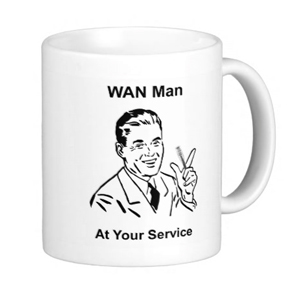By: John Shepler
While gigabit fiber connections are becoming the norm, T1 lines are still a relevant and useful option for bandwidth needs. T1 service remains popular and could be a perfect fit for your requirements, balancing speed and affordability.
T1 is a well-established and widely available telecom service. Although Plain Old Telephone Service (POTS) was once the standard, it’s being replaced by VoIP and cloud-based systems in many businesses. The existing infrastructure for POTS lines is still valuable and can be utilized for T1 service.
T1 lines are incredibly adaptable. They can function as telephone trunks for various technologies, including channelized T1 phones, ISDN PRI, and high-quality VoIP. Their widespread availability and affordability make them accessible to businesses of all sizes.
Understanding T1 Telephone Lines
T1 technology was initially developed for telephone trunking. The need to reduce the complexity of wiring between telephone switching centers led to the creation of T1 lines. Originally, each phone conversation required a dedicated pair of wires. To maximize efficiency, telephone companies implemented carrier telephony, allowing multiple conversations on the same wire pair by assigning distinct carrier frequencies to avoid interference. This was an analog solution.
The real innovation of T1 was the shift from analog to digital. By digitizing conversations, 24 simultaneous calls could be transmitted over a single wire pair without interference. This digital technology also eliminated noise and crosstalk issues common in earlier analog long-distance lines.
A channelized T1 telephone line comprises 24 synchronized time-division multiplexed segments or channels. Each analog phone signal is converted to digital using 8 bits at 64 Kbps, maintaining call quality. Standard twisted-pair telephone cable is sufficient for transmission, and signal regenerators placed periodically allow for long-distance coverage.
ISDN PRI Telephone Trunks
In-house PBX business phone systems rely on T1 telephone lines. In recent times, ISDN PRI, or Primary Rate Interface, has emerged as an upgrade to this technology. ISDN PRI utilizes the same T1 line but employs a slightly different format, offering 23 dedicated phone lines and a control channel for system management. This is the preferred choice for call centers due to its fast connection speeds and superior voice clarity. PBX systems can accommodate multiple T1 lines to meet higher demand for outside lines.
T1 for VoIP Applications
VoIP, or Voice over Internet Protocol, is an alternative approach to providing phone service, designed for compatibility with computer networks rather than relying on traditional telephone standards. However, VoIP still requires trunks, called SIP trunks, to connect calls to cloud-based service providers. Unchannelized T1 lines are well-suited for this purpose, providing excellent reliability and sufficient bandwidth to handle numerous concurrent calls.
T1 for Internet Connectivity
In the era of gigabit broadband, the 1.5 Mbps bandwidth of a T1 internet line might seem insignificant. However, it’s a valuable resource for businesses in remote areas with limited connectivity options. T1 can be delivered over existing phone lines, providing internet access where fiber or cellular networks are unavailable.
While 1.5 Mbps may not be suitable for high-bandwidth activities like HD video streaming, it’s sufficient for small businesses needing credit card processing, connections to central offices, email access, or casual web browsing. Bonding, or combining multiple T1 lines, can increase bandwidth to 3-12 Mbps, depending on the number of lines used.
Examining the Costs
The high cost of T1 in the past, often exceeding a thousand dollars per month, is no longer the case. Currently, prices range from $200 to $300 per month, influenced by competition and distance from the telco office. This is comparable to business-grade cable broadband, although cable bandwidth is often shared and advertised speeds are not always guaranteed. In contrast, T1 provides dedicated bandwidth for your business.
For companies requiring dependable PBX phone lines, private point-to-point connections, dedicated internet access, or broadband solutions in remote areas, T1 remains a viable option. Explore T1 and bonded T1 pricing and availability and compare them to other available services.
Note: Products featuring the humorous “Wan Man” theme showcased on this page are available for purchase at the Gigapacket Zazzle Store.


